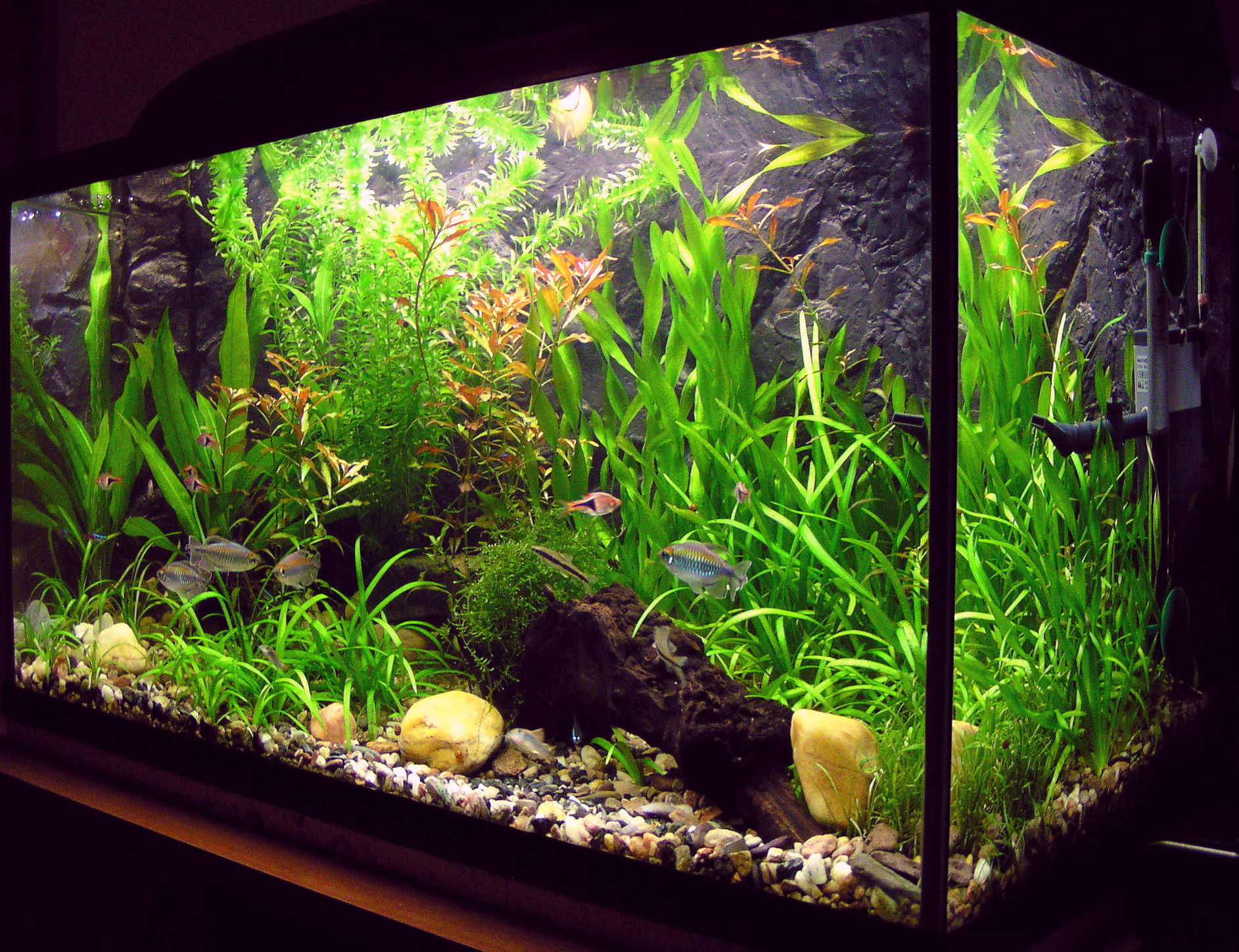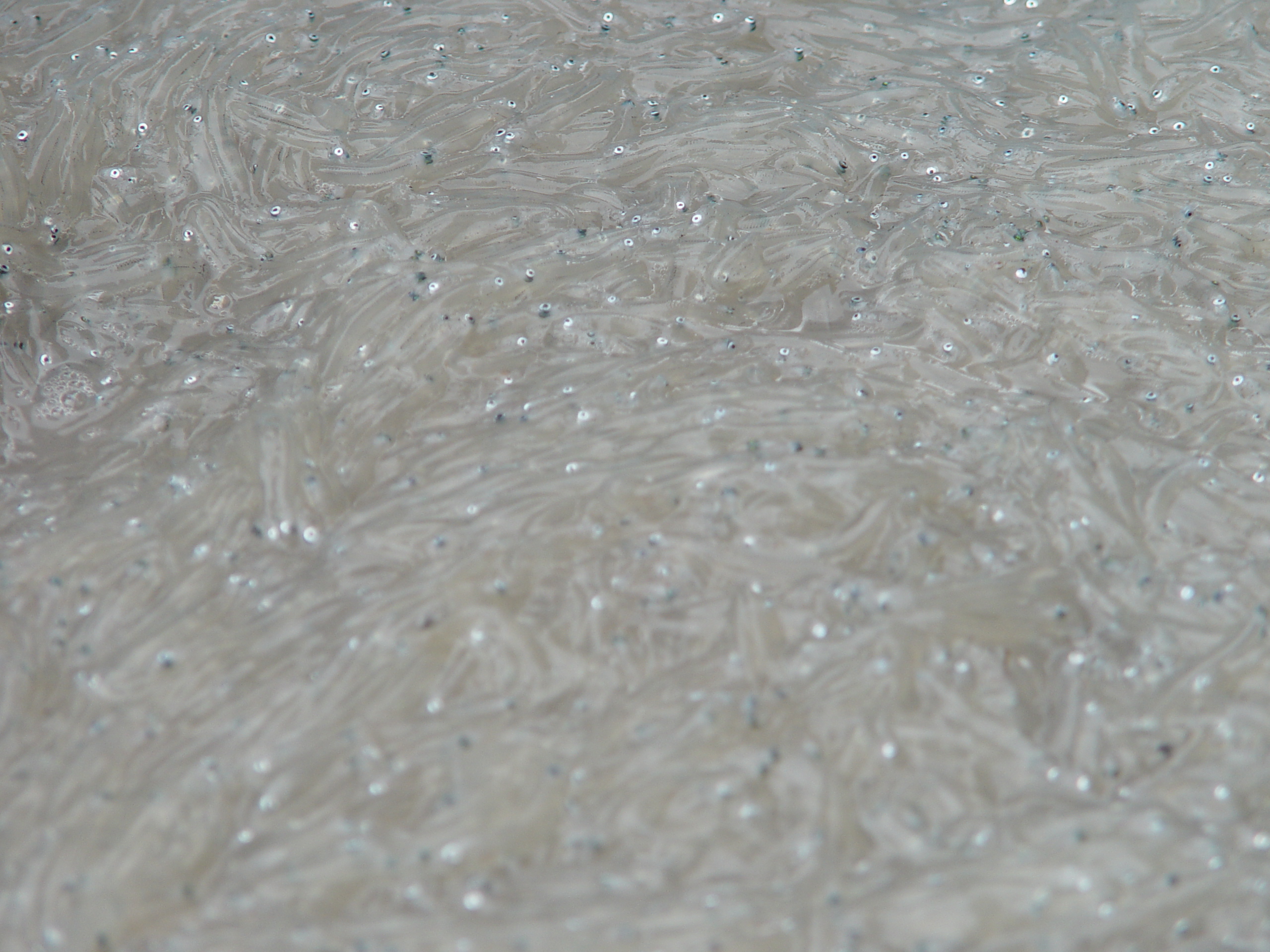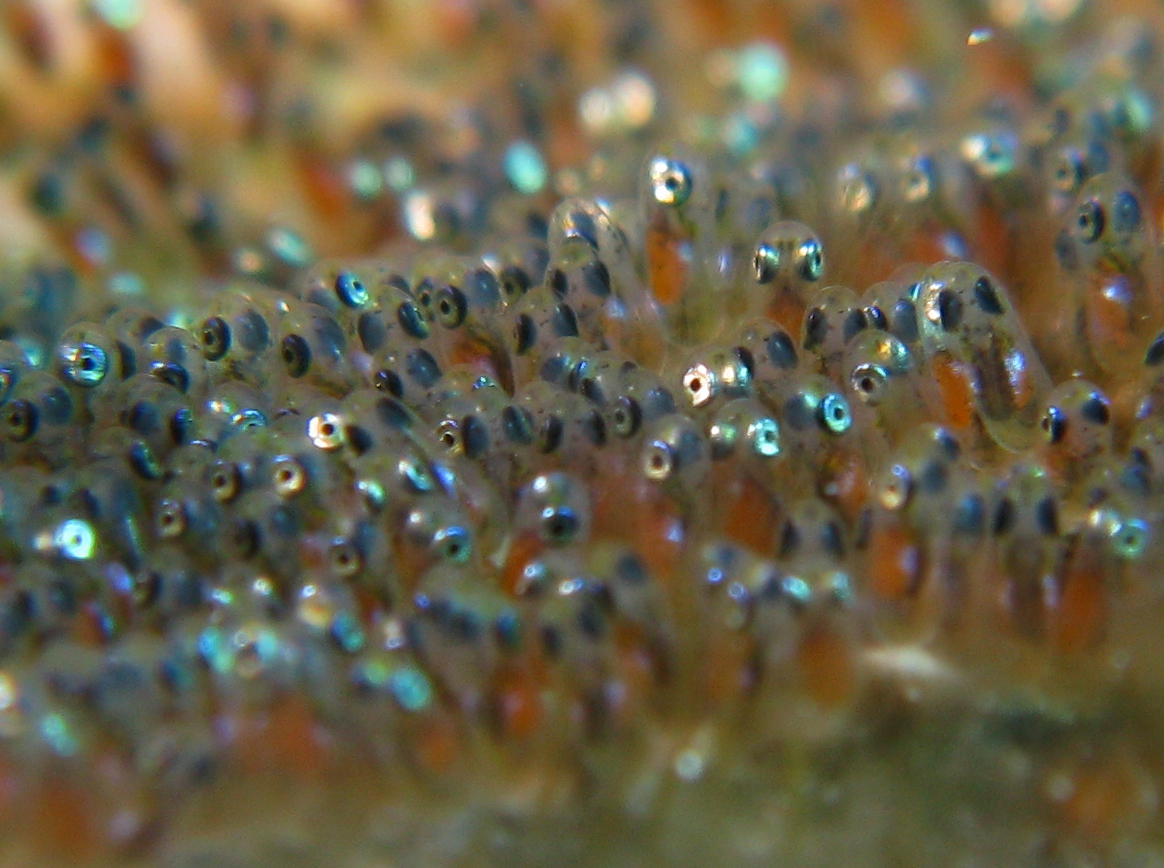|
Betta Pi
''Betta pi'' is a species of gourami belonging to the genus ''Betta''. It is found in the Pru Toe-Daeng peat swamps in Narathiwat Province in Southern Thailand, but its range also extends into northern Peninsular Malaysia, most notably the states of Kelantan and Terengganu. It is primarily found in well-shaded peat forest blackwater swamps and creeks where the pH can be as low as 3.0 or 4.0. It is benthopelagic. It can grow to a maximum length of . It is a fish of mild importance in the aquarium industry. Its diet consists of aquatic invertebrates in the wild, but will also eat frozen, live and dried foods such as larva of Chironomidae (also known as bloodworms), ''Daphnia,'' and brine shrimp in aquariums. Anatomy and behavior Anatomy ''Betta pi'' has a body, coloration, and anatomy typical of the '' B.wasseri'' complex of closely related fish. It is mostly clay yellow, with iridescent gold scales in adult males, and black throat markings, which in ''Betta pi'' resembl ... [...More Info...] [...Related Items...] OR: [Wikipedia] [Google] [Baidu] |
Tan Heok Hui
Heok Hui Tan is a Singaporean ichthyologist at the Lee Kong Chian Natural History Museum of the National University of Singapore. Dr. Tan's main interest lies in the systematics of Southeast Asian freshwater fishes, encompassing taxonomy, ecology and biogeography. His primary areas of research focus on neglected and de novo habitats such as peat swamp forests, swamp forests, and rapids. As of 2018, Tan has authored two species of Osphronemidae ( Luciocephalus aura and Betta pi ''Betta pi'' is a species of gourami belonging to the genus ''Betta''. It is found in the Pru Toe-Daeng peat swamps in Narathiwat Province in Southern Thailand, but its range also extends into northern Peninsular Malaysia, most notably the stat ...). Publications (selection) *''The Borneo Suckers: Revision of the Torrent Loaches of Borneo (Balitoridae, Gastromyzon, Neogastromyzon)'' (Natural History Publications (Borneo): 2006) * Britz, R., Kottelat. M, & Tan, H.H. 2011. ''Fangfangia spinicleit ... [...More Info...] [...Related Items...] OR: [Wikipedia] [Google] [Baidu] |
Greek Alphabet
The Greek alphabet has been used to write the Greek language since the late 9th or early 8th century BC. It was derived from the earlier Phoenician alphabet, and is the earliest known alphabetic script to systematically write vowels as well as consonants. In Archaic Greece, Archaic and early Classical Greece, Classical times, the Greek alphabet existed in Archaic Greek alphabets, many local variants, but, by the end of the 4th century BC, the Ionia, Ionic-based Euclidean alphabet, with 24 letters, ordered from alpha to omega, had become standard throughout the Greek-speaking world and is the version that is still used for Greek writing today. The letter case, uppercase and lowercase forms of the 24 letters are: : , , , , , , , , , , , , , , , , , , , , , , , The Greek alphabet is the ancestor of several scripts, such as the Latin script, Latin, Gothic alphabet, Gothic, Coptic script, Coptic, and Cyrillic scripts. Throughout antiquity, Greek had only a single uppercas ... [...More Info...] [...Related Items...] OR: [Wikipedia] [Google] [Baidu] |
Aquarium
An aquarium (: aquariums or aquaria) is a vivarium of any size having at least one transparent side in which aquatic plants or animals are kept and displayed. fishkeeping, Fishkeepers use aquaria to keep fish, invertebrates, amphibians, aquatic reptiles, such as turtles, and aquatic plants. The term ''aquarium'', coined by English naturalist Philip Henry Gosse, combines the Latin root , meaning 'water', with the suffix , meaning 'a place for relating to'. The aquarium principle was fully developed in 1850 by the chemist Robert Warington, who explained that plants added to water in a container would give off enough oxygen to support animals, so long as the numbers of animals did not grow too large. The aquarium craze was launched in early Victorian era, Victorian England by Gosse, who created and stocked the first public aquarium at the London Zoo in 1853, and published the first manual, ''The Aquarium: An Unveiling of the Wonders of the Deep Sea'' in 1854. Small aquariums are k ... [...More Info...] [...Related Items...] OR: [Wikipedia] [Google] [Baidu] |
Panagrellus Redivivus
The free-living nematode ''Panagrellus redivivus'' (sour paste nematode, or beer mat nematode from its occurrence in constantly moist felt beer mats), is known to many aquarium enthusiasts and fish keepers as the microworm. It is a tiny roundworm used as the first food for larger kinds of newly-hatched fish, such as larval common carp. The microworm is widely used in aquaculture as food for a variety of fish and crustacean species. One of thirteen currently recognized species of ''Panagrellus'', ''P. redivivus'' is about 50 μm in diameter and just over 1 mm in length, barely visible to the naked eye. Subsisting on yeast, it is easily cultured at home on a substrate of flour paste or porridge inoculated with dry yeast. Females reach maturity in about three days and deliver live young rather than eggs, as most nematodes produce. The microworm has been used in genetic analysis studies, but not nearly as universally as its relative, ''Caenorhabditis elegans ''Caenorhabdi ... [...More Info...] [...Related Items...] OR: [Wikipedia] [Google] [Baidu] |
Juvenile Fish
Fish go through various life stages between fertilization and adulthood. The life of fish start as spawned eggs which hatch into immotile larvae. These larval hatchlings are not yet capable of feeding themselves and carry a yolk sac which provides stored nutrition. Before the yolk sac completely disappears, the young fish must mature enough to be able to forage independently. When they have developed to the point where they are capable of feeding by themselves, the fish are called fry. When, in addition, they have developed scales and working fins, the transition to a juvenile fish is complete and it is called a fingerling, so called as they are typically about the size of human fingers. The juvenile stage lasts until the fish is fully grown, sexually mature and interacting with other adult fish. Growth stages Ichthyoplankton ''(planktonic or drifting fish)'' are the eggs and larvae of fish. They are usually found in the sunlit zone of the water column, less than 200 m ... [...More Info...] [...Related Items...] OR: [Wikipedia] [Google] [Baidu] |
Anal Fin
Fins are moving appendages protruding from the body of fish that interact with water to generate thrust and help the fish swim. Apart from the tail or caudal fin, fish fins have no direct connection with the back bone and are supported only by muscles. Fish fins are distinctive anatomical features with varying structures among different clades: in ray-finned fish (Actinopterygii), fins are mainly composed of bony spines or rays covered by a thin stretch of scaleless skin; in lobe-finned fish ( Sarcopterygii) such as coelacanths and lungfish, fins are short rays based around a muscular central bud supported by jointed bones; in cartilaginous fish ( Chondrichthyes) and jawless fish ( Agnatha), fins are fleshy " flippers" supported by a cartilaginous skeleton. Fins at different locations of the fish body serve different purposes, and are divided into two groups: the midsagittal ''unpaired fins'' and the more laterally located ''paired fins''. Unpaired fins are pr ... [...More Info...] [...Related Items...] OR: [Wikipedia] [Google] [Baidu] |
Spawn (biology)
Spawn is the eggs and sperm released or deposited into water by aquatic animals. As a verb, ''to spawn'' refers to the process of freely releasing eggs and sperm into a body of water (fresh or marine); the physical act is known as spawning. The vast majority of aquatic and amphibious animals reproduce through spawning. These include the following groups: * Bony fishes * Crustaceans (such as crabs, shrimps, etc.) *Mollusks (such as oysters, octopus, squid) *Echinoderms (such as sea urchins, sea stars, sea cucumbers, etc.) * Amphibians (such as frogs, toads, salamanders, newts) * Aquatic insects (such as dragonflies, mayflies, mosquitoes) *Coral, which are living colonies of tiny, aquatic organisms—not plants, as they are sometimes perceived to be. Corals, while appearing sedentary or botanical by nature, actually spawn by releasing clouds of sperm and egg cells into the water column, where the two mix. As a general rule, aquatic or semiaquatic reptiles, birds, ... [...More Info...] [...Related Items...] OR: [Wikipedia] [Google] [Baidu] |
Gourami
Gouramis, or gouramies , are a group of fresh water, freshwater Anabantiformes, anabantiform fish that comprise the family (biology), family Osphronemidae. The fish are native to Asia—from the Indian Subcontinent to Southeast Asia and northeasterly towards Korea. The name "gourami", of Indonesian language, Indonesian origin from Sundanese language, Sundanese word the name "gurame", is also used for fish of the families Helostomatidae and Anabantidae. Many gouramis have an elongated, feeler-like ray at the front of each of their pelvic fins. All living species show parental care until fry are free swimming: some are mouthbrooders, like the Krabi mouth-brooding betta (''Betta simplex''), and others, like the Siamese fighting fish (''Betta splendens''), build bubble nests. Currently, about 133 species are recognised, placed in four subfamilies and about 15 Genus, genera. The name Polyacanthidae has also been used for this family. Some fish now classified as gouramis were previous ... [...More Info...] [...Related Items...] OR: [Wikipedia] [Google] [Baidu] |
Milt
Milt is the seminal fluid of fish, mollusks, and certain other water-dwelling animals. They reproduce by spraying this fluid which contains the sperm, onto roe (fish eggs). It can also refer to the sperm sacs or testes that contain the semen. Milt (sometimes spelled melt) or soft roe also refers to the male genitalia of fish when they contain sperm, used as food. Many cultures eat milt, often fried, though not usually as a dish by itself. As a food item, milt is farmed year-round in nitrogen tanks, through hormone induction or photoperiod control. Production Production of milt may be affected by external stimuli. Goldfish are known to produce more milt when isolated from other males in their group, but will continue to produce high levels even when exposed to the scent of an unfamiliar male, suggesting that milt production is affected by close contact to rival males. Milt production is also stimulated by the scent of a female fish. Milt itself may contain pheremones that a ... [...More Info...] [...Related Items...] OR: [Wikipedia] [Google] [Baidu] |
Mouthbrooder
Mouthbrooding, also known as oral incubation and buccal incubation, is the care given by some groups of animals to their offspring by holding them in the mouth of the parent for extended periods of time. Although mouthbrooding is performed by a variety of different animals, such as the Darwin's frog, fish are by far the most diverse mouthbrooders. Mouthbrooding has evolved independently in several different families of fish. Mouthbrooding behaviour Paternal mouthbrooders are species where the male looks after the eggs. Paternal mouthbrooders include the arowana, various mouthbrooding bettas and gouramies such as '' Betta pugnax'', and sea catfish such as '' Ariopsis felis''. Among cichlids, paternal mouthbrooding is relatively rare, but is found among some of the tilapiines, most notably the black-chin tilapia '' Sarotherodon melanotheron''. In the case of the maternal mouthbrooders, the female takes the eggs. Maternal mouthbrooders are found among both African and South American ... [...More Info...] [...Related Items...] OR: [Wikipedia] [Google] [Baidu] |
Sexual Dimorphism
Sexual dimorphism is the condition where sexes of the same species exhibit different Morphology (biology), morphological characteristics, including characteristics not directly involved in reproduction. The condition occurs in most dioecy, dioecious species, which consist of most animals and some plants. Differences may include secondary sex characteristics, size, weight, color, markings, or behavioral or cognitive traits. Male-male reproductive competition has evolved a diverse array of sexually dimorphic traits. Aggressive utility traits such as "battle" teeth and blunt heads reinforced as battering rams are used as weapons in aggressive interactions between rivals. Passive displays such as ornamental feathering or song-calling have also evolved mainly through sexual selection. These differences may be subtle or exaggerated and may be subjected to sexual selection and natural selection. The opposite of dimorphism is ''monomorphism'', when both biological sexes are phenotype, ... [...More Info...] [...Related Items...] OR: [Wikipedia] [Google] [Baidu] |
Community Aquarium
Community aquaria are tanks that are designed to contain more than one species of fish. Most commonly they include a variety of species that do not normally occur together in nature, for example angelfish from Brazil, swordtails from Mexico, and gouramis from South East Asia. The aim of such communities is to bring together fish that are compatible in temperament and water requirements, while using their different colours and behaviors to add interest and entertainment value. Though not usually called community tanks, most marine aquaria fit into this category too, using fish from places as diverse as the Caribbean, Red Sea, and western Pacific Ocean. Other aquarists prefer communities, called biotopes, that represent particular geographic locations, and combine fish with appropriate decorative materials including endogenous rocks and plants. The most popular of these geographically correct community tanks are those replicating the cichlid habitat of the East African Rift lake ... [...More Info...] [...Related Items...] OR: [Wikipedia] [Google] [Baidu] |




